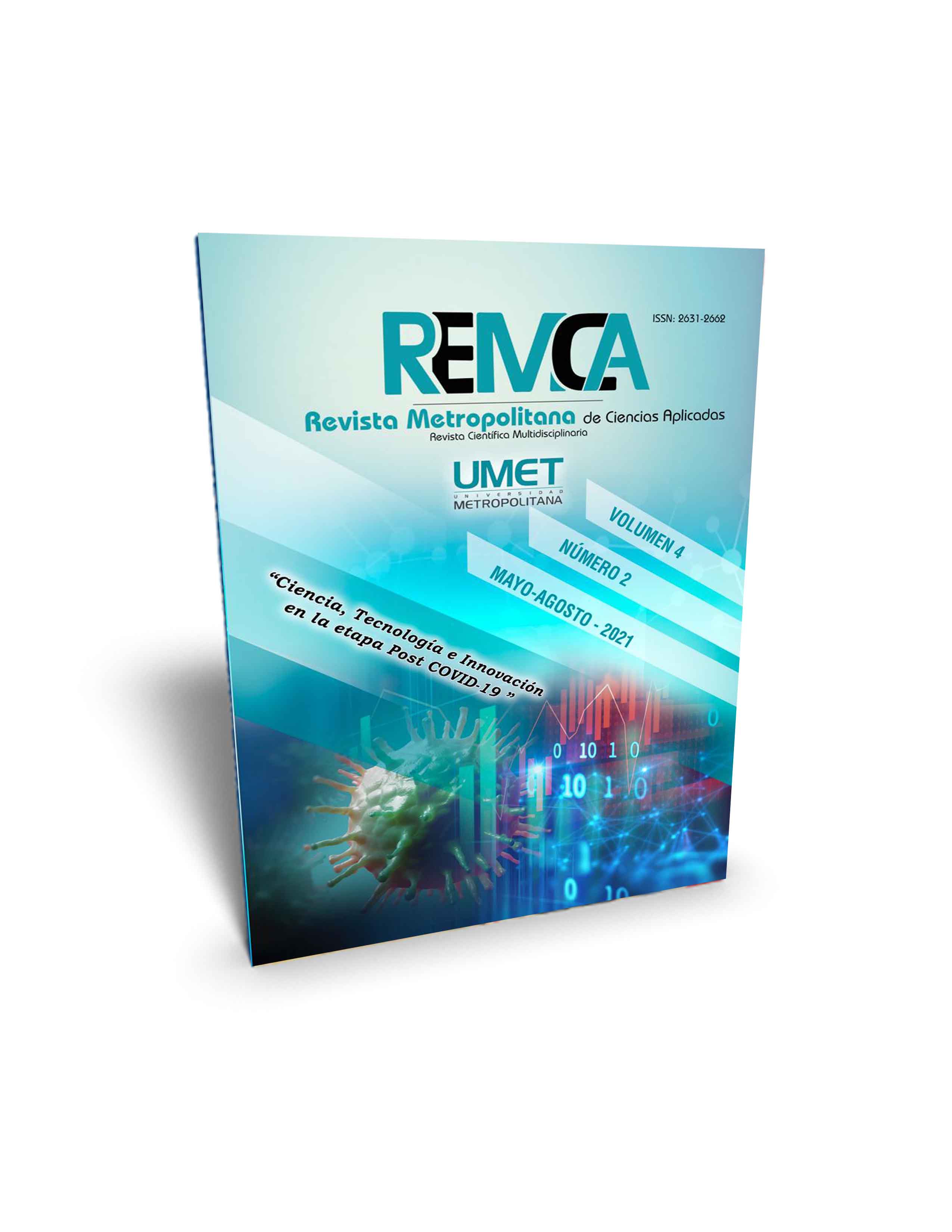Video didactics in the process of teaching mathematics at secondary level
DOI:
https://doi.org/10.62452/c56psr91Keywords:
Didactic video, flipped classroom, innovation, mathematics, secondary levelAbstract
A theoretical-conceptual analysis is presented in relation to the use of educational technology and its integration in the teaching-learning process in secondary education, with the intention of structuring a referential framework that allows to support an intervention project and improvement of the mathematics class in the context of emergency remote teaching in the face of the health emergency situation caused by Covid-19. The purpose of the project is pedagogical innovation through the design of didactic videos for the teaching of mathematics at the secondary level. For the theoretical framework, the theory of connectivism developed by George Siemens is approached and for the conceptual framework the notion of didactic video and its variant as interactive video is developed, as well as that referred to the flipped classroom as a pedagogical model. Studies about the didactic video as a teaching-learning tool and as an important means in the flipped classroom methodology are also analyzed. It concludes with a reflection on the challenges that teachers face and how the project adjusts to the current needs of a particular context.
Downloads
References
Aparicio, E., Sosa, L., Torres, L., & Gómez, K. (2018). Reconceptualización del saber matemático en educación básica. Universidad Autónoma de Yucatán.
Bolio Couoh, J. R., & Quiñonez Pech, S. H. (2020). Consideraciones para la integración tecnológica en la educación matemática. Revista de la Universidad Autónoma de Yucatán, 35 (277), 58-70.
Bravo Ramos, J. L. (1996). ¿Qué es el vídeo educativo? Comunicar, 3(6). 100-105.
Bravo Ramos, J. L. (2000). El video educativo. ICE Universidad Politécnica de Madrid.
Cabero Almenara, J. (2007). Propuestas para la utilización del vídeo en los centros. Biblioteca Virtual de Tecnología Educativa. http://www.lmi.ub.es/te/any96/cabero_bvte/#capitol1
Cabero Almenara, J., Llorente Cejudo, M., & Román Graván, P. (2005). Las posibilidades del video digital para la formación. Labor Docente, 4, 58-74.
Cebrián de la Serna, M. (1994). Los videos didácticos: claves para su producción y evaluación. Píxel-Bit. Revista De Medios Y Educación, (1), 31-44.
Flipped Learning Network. (2014). The Four Pillars of FLIP. Flipped Learning. http://www.flippedlearning.org/definition
Long, T., Logan, J., & Waugh, M. (2016). Students’ Perceptions of the Value of Using Videos as a Pre-class Learning Experience in the Flipped Classroom. TechTrends, 60(3), 242-252.
Marquès Graells, P. (1999). Los vídeos educativos: tipología, funciones, orientaciones para su uso. Pere Marquès & Tecnología educativa. http://www.peremarques.net/videoori.htm
México. Secretaría de Educación Pública. (2001). Libro para el maestro. Educación Secundaria. Matemáticas. SEP.
México. Secretaría de Gobernación. (1993). Acuerdo número 177 por el que se establece un nuevo Plan de Estudios para Educación Secundaria. Diario oficial de la federación. http://dof.gob.mx/nota_detalle.php?codigo=4742360&fecha=04/06/1993
Monteagudo Valdivia, P., Sánchez Mansolo, A. y Hernández Medina, M. (2007). El video como medio de enseñanza: Universidad Barrio Adentro. República Bolivariana de Venezuela. Educación Médica Superior, 21(2).
Moreno, R., & Mayer, R. (2007). Interactive Multimodal Learning Environments. Educational Psychology Review, 19(3), 309–326.
Organización de las Naciones Unidas para la Educación, la Ciencia y la Cultura. (2020). Surgen alarmantes brechas digitales en el aprendizaje a distancia. UNESCO. https://es.unesco.org/news/surgen-alarmantes-brechas-digitales-aprendizaje-distancia
Pasterfield, L. (2015). Amplify the power: Five reasons to use interactive video. Elearn, 12 (3).
Pedrosa, M., Astiz, M., & Vivera, C. (2020). El uso del video como recurso didáctico en el aula de matemática. Revista de Educación, (21.1), 217-234.
Salinas Ibañez, J. (1993). Interacción, medios interactivos y video interactivo. Enseñanza y Teaching: Revista interuniversitaria de didáctica, 10-11,137-148.
Secretaría de Educación Pública. (2017). Modelo Educativo para la Educación Obligatoria. Diario Oficial. https://www.sep.gob.mx/work/models/sep1/Resource/15105/1/images/modelo_educativo_educacion_obligatoria.pdf
Siemens, G. (2004). Connectivism: A Learning Theory for the Digital Age. International Journal of Instructional Technology and Distance Learning, 2.
Torres, F. V. (2018). El uso del vídeo como elemento de apoyo didáctico en el proceso de enseñanza de las matemáticas. En, L. Sánchez Guerrero, A.R, García Gaona y F. J, Álvarez Rodríguez (eds.), Emprendiendo Innovaciones con Tecnologías Exponenciales. (pp. 65-69). Alfa-Omega.
Zambrano Izquierdo, D., Gómez Zermeño, M., & Guerrero Roldan, A. (2017). Entorno digital de aprendizaje: ¿El video interactivo? (Ponencia). Congreso Nacional de Investigación Educativa. San Luis Potosí, México.
Zhang, D., Zhou, L., Briggs, R., & Nunamaker, J. J. (2006). Instructional video in e-learning: Assessing the impact of interactive video on learning effectiveness. Information & management, 43(1), 15-27.
Downloads
Published
Issue
Section
License
Copyright (c) 2021 Jessica Rubí Bolio Couoh, Rosamary Selene Lara Villanueva (Autor/a)

This work is licensed under a Creative Commons Attribution-NonCommercial-ShareAlike 4.0 International License.
Authors who publish in Revista Metropolitana de Ciencias Aplicadas (REMCA), agree to the following terms:
1. Copyright
Authors retain unrestricted copyright to their work. Authors grant the journal the right of first publication. To this end, they assign the journal non-exclusive exploitation rights (reproduction, distribution, public communication, and transformation). Authors may enter into additional agreements for the non-exclusive distribution of the version of the work published in the journal, provided that acknowledgment of its initial publication in this journal is given.
© The authors.
2. License
The articles are published in the journal under the Creative Commons Attribution-NonCommercial-ShareAlike 4.0 International License (CC BY-NC-SA 4.0). The terms can be found at: https://creativecommons.org/licenses/by-nc-sa/4.0/deed.en
This license allows:
- Sharing: Copying and redistributing the material in any medium or format.
- Adapting: Remixing, transforming, and building upon the material.
Under the following terms:
- Attribution: You must give appropriate credit, provide a link to the license, and indicate if any changes were made. You may do this in any reasonable manner, but not in any way that suggests the licensor endorses or sponsors your use.
- NonCommercial: You may not use the material for commercial purposes.
- ShareAlike: If you remix, transform, or build upon the material, you must distribute your creation under the same license as the original work.
There are no additional restrictions. You may not apply legal terms or technological measures that legally restrict others from doing anything the license permits.




